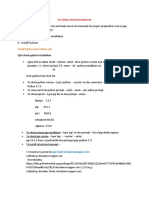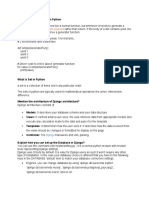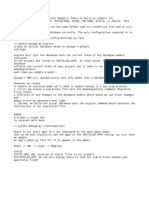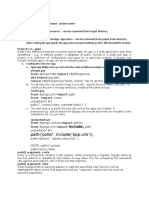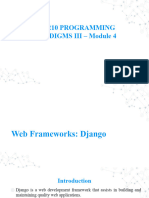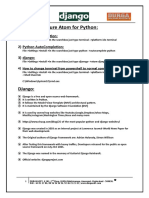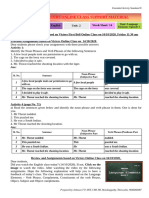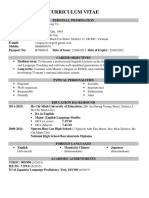0% found this document useful (0 votes)
179 views20 pagesDjango & Data Analytics Setup Guide
This document discusses using Python Django and data analytics. It provides an overview of creating a virtual environment, setting up a Django project, loading data into a MySQL database, extracting data from an API, and displaying results using Google visualization services. It then gives steps for installing prerequisites like LAMP, creating a virtual environment, installing Django and MySQL packages, creating a Django project, connecting the project to the MySQL database, creating a database table via models, and deploying the project.
Uploaded by
Andre Zotacuro LomaCopyright
© © All Rights Reserved
We take content rights seriously. If you suspect this is your content, claim it here.
Available Formats
Download as PDF, TXT or read online on Scribd
0% found this document useful (0 votes)
179 views20 pagesDjango & Data Analytics Setup Guide
This document discusses using Python Django and data analytics. It provides an overview of creating a virtual environment, setting up a Django project, loading data into a MySQL database, extracting data from an API, and displaying results using Google visualization services. It then gives steps for installing prerequisites like LAMP, creating a virtual environment, installing Django and MySQL packages, creating a Django project, connecting the project to the MySQL database, creating a database table via models, and deploying the project.
Uploaded by
Andre Zotacuro LomaCopyright
© © All Rights Reserved
We take content rights seriously. If you suspect this is your content, claim it here.
Available Formats
Download as PDF, TXT or read online on Scribd
/ 20



